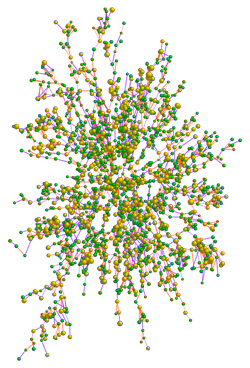The two men started publishing their findings with a splash: a 2007 article in the New England Journal of Medicine reporting that obesity spreads through social networks, as people are apparently influenced by friends’ weight gain to become obese themselves. More perplexing is their finding that obesity spreads through up to three degrees of separation. If a subject named a friend who was also in the study, and that friend’s friend became obese, the first subject’s chances of becoming obese were roughly 20 percent greater. Across one more degree of influence (husband’s friend’s friend or friend’s sibling’s friend—i.e., three degrees away), the risk was 10 percent greater. Weight gain appears to ripple through friend groups via some unseen mechanism such as altered eating or exercise behavior, or adjustment of social norms regarding weight.We are our brother’s keeper, and our brothers, sisters, aunts, uncles, parents, children, friends, colleagues, and neighbors are our keepers.The authors found similar patterns for happiness, loneliness, depression, alcohol consumption, the decision to stop smoking, and even divorce. “Our health depends on more than our own biology or even our own choices and actions,” they write in Connected. “Our health also depends quite literally on the biology, choices, and actions of those around us.”
Obesity Network
Networked —
Exploring the weblike structures that underlie everything from friendship to cellular behavior:
